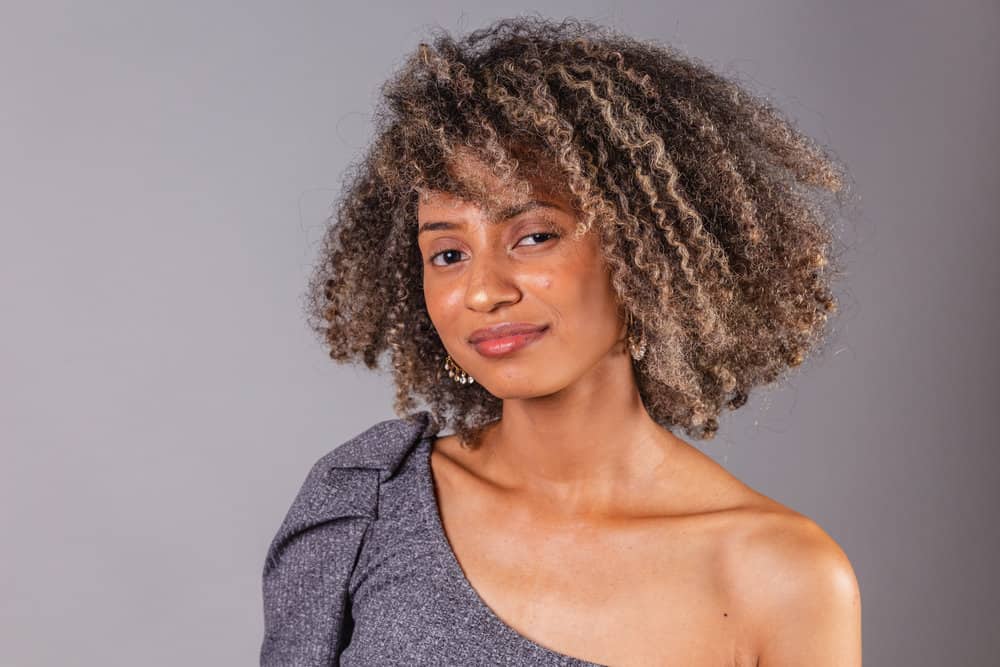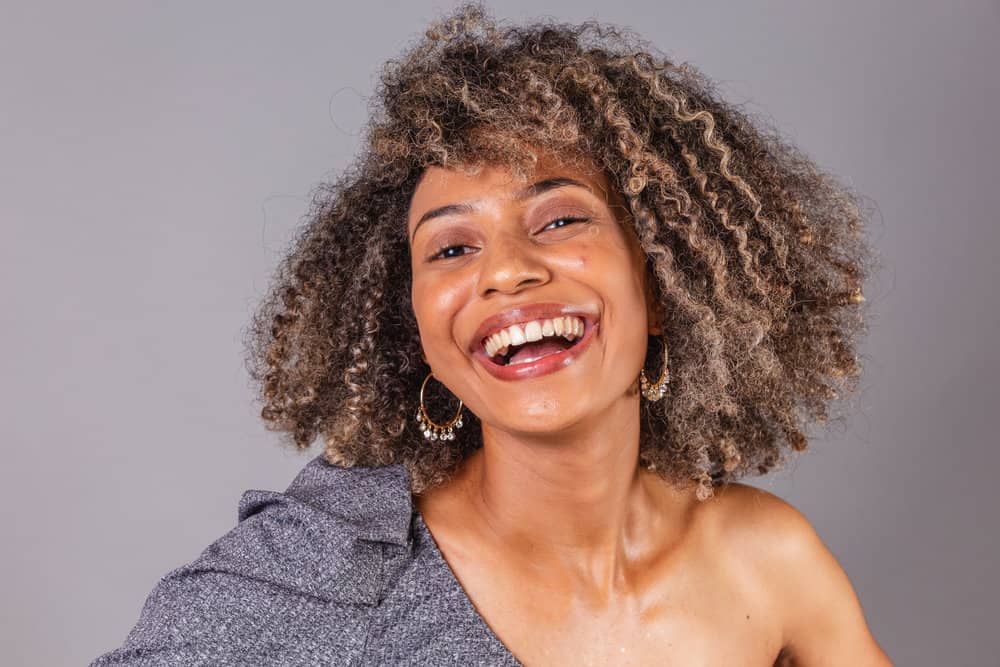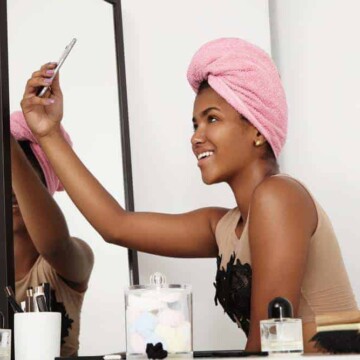
When it comes to our manes, separating fact from fiction is essential for maintaining healthy and luscious hair. Unfortunately, a lot of the natural hair information you'll come across on the internet and social media is simply untrue.
In this article, we dive deep into the world of hair care, debunking common hair myths that have circulated for far too long. Let’s get right into it!
Table of Contents
- 1 Debunking Popular Hair Myths
- 2 Myth 1: Cutting Your Hair Frequently Makes It Grow Faster
- 3 Myth 2: Brushing Your Hair 100 Strokes a Day Makes It Healthier
- 4 Myth 3: Plucking One Gray Hair Causes Multiple Gray Hairs to Grow
- 5 Myth 4: Washing Your Hair Frequently Makes It Healthier
- 6 Myth 5: Using Cold Water Makes Your Hair Shinier
- 7 Myth 6: Split Ends Can Be Repaired with the Right Products
- 8 Myth 7: Hair Is More Fragile When It's Dry
- 9 Myth 8: Wearing Hats Leads to Hair Loss
- 10 Myth 9: More Shampoo Is Better
- 11 Myth 10: Shaving Your Hair Makes It Grow Back Thicker and Darker
- 12 Myth 11: Natural Hair Products Are Always Better for Your Hair
- 13 Myth 12: Dandruff Is Caused by Having a Dry Scalp
- 14 Myth 13: Wearing a Ponytail or Bun Causes Hair to Grow Back Thicker
- 15 Myth 14: Coloring Your Hair Leads to Permanent Hair Loss
- 16 Myth 15: Trimming Your Hair During a Specific Lunar Phase Promotes Faster Growth
- 17 Myth 16: Sleeping with Wet Hair Causes Illness
Debunking Popular Hair Myths
This section debunks various hair myths, highlighting facts like cutting your hair doesn't make it grow faster and so much more. Let's get started debunking the first myth.

Myth 1: Cutting Your Hair Frequently Makes It Grow Faster
Truth: Hair growth happens at the roots, not at the ends. Regular trims may help to maintain your hair’s health and prevent split ends from worsening and causing your hair to break. But they do not affect the rate of hair growth.
Your goal also shouldn’t be to cut your hair frequently. It should be cut only as needed. If you have a ton of split ends and want to get rid of them all at once, cutting your hair is a good idea. Otherwise, there’s no need to cut your hair unless you simply want to.
Myth 2: Brushing Your Hair 100 Strokes a Day Makes It Healthier
Truth: This myth is rooted in the fact that brushing your hair can pull your scalp oils down the length of your strands. This could be a good thing, except for the fact that excessive brushing can cause hair breakage and damage.
And if your hair is curly, it’s naturally more prone to breakage anyway. Always brush your hair gently and only as needed to prevent tangles and distribute natural oils.
Myth 3: Plucking One Gray Hair Causes Multiple Gray Hairs to Grow
Truth: Plucking one gray hair does not cause more to grow in its place. Each hair follicle is responsible for producing a single hair, and the growth of each strand is independent of the others. Therefore, removing one gray hair will not trigger the growth of multiple new gray hairs.
However, it's important to note that excessive plucking can have negative consequences for your hair and scalp health. When you pluck a hair, you are essentially pulling it out from the root.
Repeatedly plucking hairs from the same follicle can lead to follicle damage and potential hair loss. The hair follicle is a delicate structure, and aggressive plucking can disrupt its level of functioning.
Over time, the constant trauma caused by plucking can weaken the hair follicle, leading to hair that becomes finer and weaker. In some cases, there could even be permanent damage to the follicle, leading to the inability to produce new hair altogether.

Myth 4: Washing Your Hair Frequently Makes It Healthier
Truth: Regular shampooing is essential for maintaining your hair and scalp hair. It helps to remove excess oil, dirt, product buildup, and environmental pollutants that can accumulate over time.
But it’s crucial to strike a balance because over-washing can have negative effects on your hair and scalp. When you wash your hair, the shampoo works to cleanse the scalp and strands by removing the natural oils (sebum) that are produced by the sebaceous glands.
These oils serve a vital purpose in keeping the hair moisturized and protected.
They act as a natural conditioner, preventing dryness and maintaining the hair's natural shine. Excessive washing (daily washing, for example), especially with harsh or drying sulfate-laden shampoos, can strip away these natural oils.
This can lead to dryness, frizz, and a lack of moisture in both the scalp and hair. Scalp dryness may cause itching, irritation, and even flakiness. Additionally, when the hair becomes overly dry, it may become brittle, prone to breakage, and lose its luster.
Finding the right hair-washing frequency depends on various factors, including your hair type, scalp condition, and personal preferences. Start by observing your hair's natural oiliness.
If your scalp tends to get greasy quickly, you may need to wash your hair more frequently - still not daily. On the other hand, if your hair is drier or more prone to dryness, you can space out your washes to preserve your natural oils.
Myth 5: Using Cold Water Makes Your Hair Shinier
Truth: While rinsing with cold water can temporarily smooth the hair cuticle and enhance shine, the effect is minimal. The best way to achieve shine is through proper hair care, including conditioning and heat damage protection.
The key to achieving a luminous shine lies in implementing a comprehensive hair care routine. Regular conditioning is crucial as it helps to nourish and moisturize the hair, promoting a healthy appearance and enhancing its natural shine.
Additionally, protecting the hair from heat damage caused by styling tools, such as flat irons or curling wands, is crucial.
Excessive heat can strip the hair of its moisture and leave it looking dull. Utilizing heat protectant sprays and minimizing heat styling can go a long way in maintaining the hair's shine and overall health.
Ultimately, though a cold water rinse may provide a temporary shine boost, investing time and effort in proper hair care practices will yield more significant and lasting results when it comes to achieving lustrous, shiny locks.

Myth 6: Split Ends Can Be Repaired with the Right Products
Truth: When it comes to split ends, prevention is key. Once the hair is split, there is no magical product that can fully repair it. While some products may claim to seal split ends and provide a smoother appearance, these solutions are only temporary and do not address the underlying damage.
The most effective long-term solution for split ends is a good trim.
Regular hair trims, every 6-12 weeks, help to remove the damaged ends and prevent further splitting. By maintaining a consistent trimming routine, you can keep your hair healthier and minimize the occurrence of split ends.
Additionally, adopting a proper hair care routine, including gentle handling, moisturizing products, and minimizing heat and chemical damage, can prevent split ends from forming in the first place, promoting overall hair health and vitality.
Myth 7: Hair Is More Fragile When It's Dry
Truth: Wet hair is more prone to breakage than dry hair. This is due to its altered physical properties when saturated with water. When hair is wet, it becomes more elastic and stretches easily.
The increased elasticity can make the hair more vulnerable to breakage when subjected to tension or pulling forces. Additionally, wet hair is more susceptible to friction and mechanical damage because the water weakens the hair shaft temporarily.
When it comes to brushing wet hair, it's crucial to handle it with care to prevent breakage. Opt for a wide-toothed comb or a brush specifically designed for wet hair. These tools have wider spaces between the teeth or bristles, which help to detangle without causing excessive pulling or snapping.
When possible, avoid using fine-toothed combs or brushes with closely packed bristles, as they are more likely to pull or tug at your strands. Also, don’t brush with excessive force, as it can further weaken wet strands.
Instead, start from the ends and work your way up, using gentle and slow strokes to minimize tension on the hair. Taking these precautions will help maintain the health and integrity of your wet hair, reducing the risk of breakage and promoting overall hair strength.

Myth 8: Wearing Hats Leads to Hair Loss
Truth: Wearing hats, in general, does not cause hair loss. The truth is that wearing hats that are too tight can lead to hair breakage over time. Additionally, hairstyles like tight ponytails, braids, or buns that pull on the hair can cause a condition called traction alopecia.
This occurs when constant or excessive tension is applied to the hair follicles, leading to hair loss in the affected areas. To prevent hair breakage or traction alopecia, opt for looser-fitting hats and avoid overly tight hairstyles that put excessive strain on the hair and scalp.
Taking regular breaks from tight hairstyles and allowing your hair to rest can help maintain its health and minimize the risk of damage.
Myth 9: More Shampoo Is Better
Truth: To determine the appropriate amount of shampoo for your hair length, consider the density and texture of your hair. Generally, a moderate amount of shampoo, about the size of a quarter for medium-length hair, is usually enough to cleanse your hair effectively.
Adjust the amount as needed based on the length and thickness of your hair. If your hair is curly or super thick, you’ll need to be more liberal with the shampoo. Focus on applying the shampoo to your scalp and roots, where oil, dirt, and product buildup accumulate the most.
Gently massage the shampoo into your scalp using your fingertips, creating a lather that can be spread throughout the rest of your hair as you rinse. Remember that using too little shampoo can result in a not-so-effective wash session.
So, it's better to use too much shampoo than too little. Experiment with the amount you use, and always rinse thoroughly to ensure all traces of shampoo are removed from your hair.

Myth 10: Shaving Your Hair Makes It Grow Back Thicker and Darker
Truth: Shaving does not alter the fundamental characteristics of your hair, such as texture or color. When hair regrows after shaving, the blunt tip may give the illusion of coarseness, making it feel rougher to the touch.
However, this is simply because the hair has been cut straight across – it doesn’t taper naturally like unshaven hair. As the hair continues to grow, it will regain its natural texture and appearance.
The thickness and color of your hair remain unchanged by the act of shaving, as these traits are determined by genetics and other factors unrelated to the act of removing hair at the surface level.
Myth 11: Natural Hair Products Are Always Better for Your Hair
Truth: "Natural" doesn't necessarily mean better. Many products marketed to be natural contain harmful ingredients that could do harm to your scalp, hair, or health.
For that reason, we recommend taking a good, hard look at your hair product labels and looking up any questionable ingredients. In addition, some 100% natural products might not be the right fit for your hair and scalp chemistry. Always be cautious when trying new products, and pay attention to how your hair and scalp respond.

Myth 12: Dandruff Is Caused by Having a Dry Scalp
Truth: Dandruff can and does occur in individuals with both dry and oily scalps. Dandruff is primarily caused by an overgrowth of Malassezia, a yeast-like fungus that naturally resides on the scalp.
This overgrowth can lead to scalp irritation and the shedding of dead skin cells, resulting in those visible white or yellow flakes.
Though dryness can exacerbate dandruff symptoms, it is not the only cause. Individuals with oily scalps can also experience dandruff because excessive oil production provides an ideal environment for the Malassezia fungus to thrive.
To effectively manage dandruff, use an anti-dandruff shampoo. These shampoos often contain active ingredients like zinc pyrithione and selenium sulfide, which help control the overgrowth of the fungus and reduce flaking.
Using an anti-dandruff shampoo, according to the instructions on the label, can keep dandruff under control and provide relief from scalp irritation and flaking. This applies regardless of whether your scalp is dry or oily.
Myth 13: Wearing a Ponytail or Bun Causes Hair to Grow Back Thicker
Truth: Traction alopecia and hair breakage can occur when hairstyles like ponytails or buns exert excessive tension on the hair follicles. While the hairstyles themselves do not directly impact the thickness or density of hair growth, the constant pulling and tightness can weaken the hair shaft and cause it to break.
To avoid these issues, opt for looser hairstyles that don't yank at your scalp. Additionally, give your hair a break after removing any long-term protective style - one or two weeks is about standard.
If you do choose to wear ponytails or buns, using ouchless hair ties and varying the placement of the hairstyle can minimize tension and reduce the risk of traction alopecia and hair breakage.

Myth 14: Coloring Your Hair Leads to Permanent Hair Loss
Truth: When done properly and using professional-grade products, hair coloring generally does not cause permanent hair loss. Professional hair dyes are formulated to minimize damage and provide optimal results.
However, excessive or improper use of hair dyes, particularly those containing harsh chemicals, can weaken the hair's structure and lead to breakage. It's crucial to follow the instructions carefully, perform patch tests, and consider seeking professional help for complex color changes or lightening.
Additionally, proper color-treated hair care involving moisturizing treatments and minimal heat styling can help maintain the health and integrity of colored hair. By taking these precautions, you can enjoy the transformative effects of hair coloring while minimizing the risk of damage and hair loss.
Myth 15: Trimming Your Hair During a Specific Lunar Phase Promotes Faster Growth
Truth: When it comes to hair growth, lunar phases hold no scientific basis. The idea that trimming your hair according to moon cycles can affect its growth rate is purely a myth.
Hair growth is primarily determined by factors such as genetics, overall health, and hormonal fluctuations rather than the position of the moon. While the moon may have a profound influence on tides and other natural phenomena, there is no credible scientific evidence linking it to hair growth.
So, feel free to schedule your hair trims based on your personal preferences and hair care needs without worrying about the lunar phase. Focus on maintaining a healthy hair care routine, nourishing your hair from within, and embracing styles that make you feel confident and beautiful.

Myth 16: Sleeping with Wet Hair Causes Illness
Truth: Having a wet head at night does not directly cause illness. Illnesses are typically caused by pathogens such as viruses, bacteria, or other harmful microorganisms.
Simply having wet hair does not introduce these pathogens into your body or directly make you more susceptible to illness. However, sleeping with wet hair can create an environment that may contribute to certain scalp issues.
When hair is damp for an extended period, it can create a warm and moist environment that promotes the growth of bacteria or fungi. This can lead to scalp-related problems such as dandruff or itchiness.
So, though it may not cause illness per se, we still advise you to allow your hair to dry before going to bed to maintain optimal scalp health and prevent potential issues.
You can either air dry your hair completely before bed, use a low-heat setting on a hairdryer to speed up the drying process, or towel dry and then air dry or blow dry.
It's all up to you. Choose the drying method that works best for you. Whenever you'll be applying heat to your hair, be sure to use a heat protectant beforehand to protect against damage. Your hair will thank you.
Understanding the facts about hair care can help you make informed decisions and develop a healthy hair routine. We hope you learned something throughout the course of this article, and we wish you the best with your hair.




